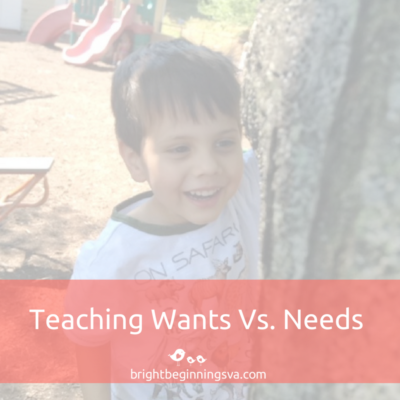Teaching Preschoolers Wants Vs. Needs
Teaching Preschoolers Wants Vs. Needs

It's only natural for kids to want things. A bike, a tablet, stuffed animals, video games, cars and castles-the list goes on and on! But, as a teacher and/or parent, it’s important to help them realize that there is a difference between something they want and something they truly need. This concept is great to introduce when your child is in preschool. Here’s how!
- Page Through Magazines Before you toss your latest issues, use your magazines as a learning opportunity. Ask your child if they can point out things that people need in order to live. Lead the search by locating something like toothpaste, clothing, food, or water. Invite your child to do the same. Then, point out that toys and pets are wants, and that they are fun to have; but they can live their life without them.
- Teach At the Grocery Store Grocery stores are great places to teach needs vs. wants. As you stroll through the produce aisle, point out that kids need to eat healthy foods like apples; to stay alive. But, point out that the caramel dipping sauces located next to them are wants because they are an item that is a treat that goes along with the apple. Each aisle will have lots of learning opportunities.
- Use the Correct Vocabulary Preschool children (and toddlers) often use the term, “I want” for everything; even if it’s something they truly need (like a cup of water). Correct them at home every time they use the term, “I want” incorrectly. Praise them for remembering to use it right. You can even start a sticker chart for incentive and motivation; explaining that if they earn enough they can pick out something they “want.”
- Involve Them When Shopping When getting ready to shop, it’s smart to make a list in front of your preschooler. On one side, record things you need. If you’re going back to school shopping, items to include would be a book bag, lunch bag, folder, crayons, and pencils. On the other side of your list, make a want column. Ask them to provide you with some items that interest them for fun, like pencil toppers, or glitter markers. Explain that if you have money left over from your budget, they can choose some things from the want column. If you do not have money left over, then nothing gets selected. It’s a hard lesson to learn at first, but your preschooler will thank you in the long run.
Everyone wants things (even us adults!) But, it’s important to teach your child at a young age there is a difference between a want and a need. The sooner you start to implement the tips above, the sooner you get to set the groundwork for having a gracious and understanding child!




